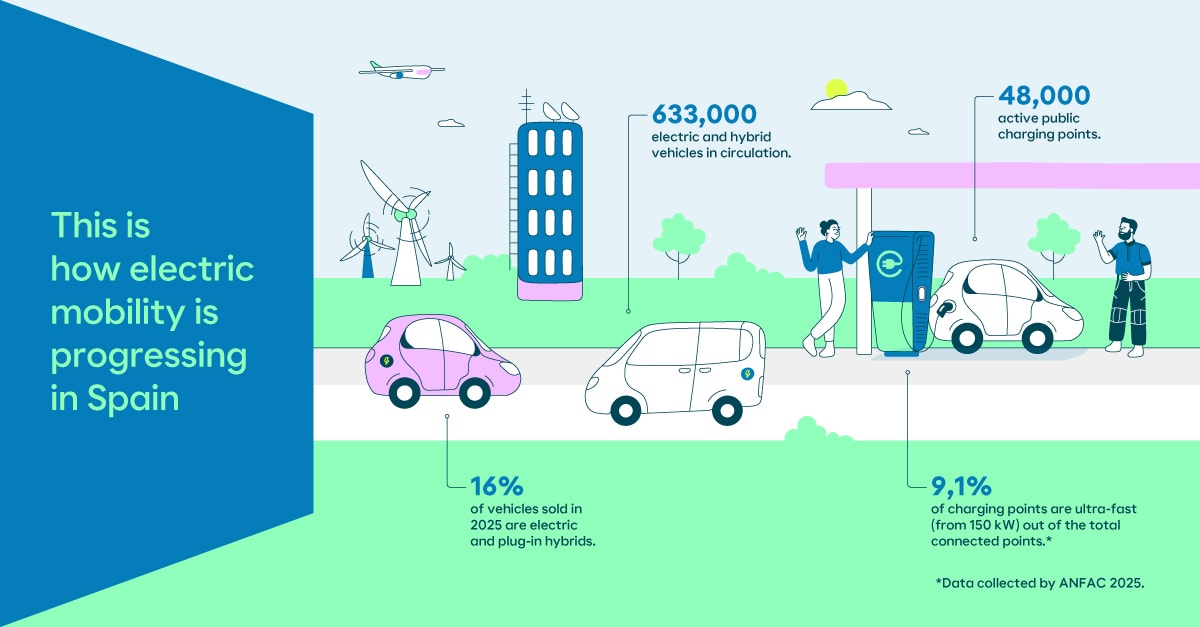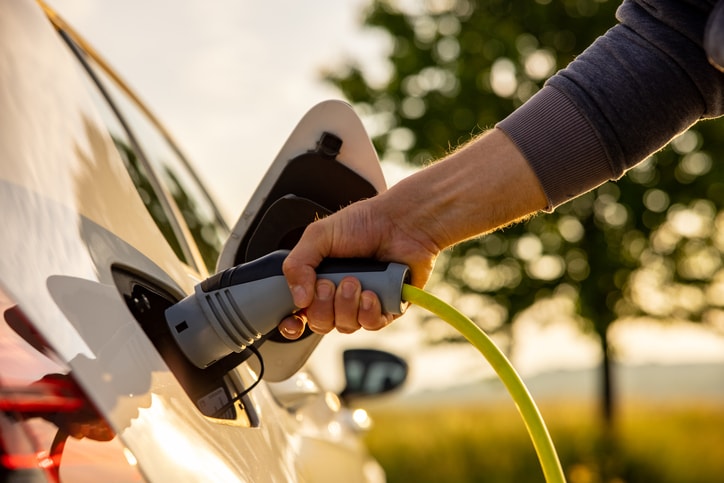Electric mobility is emerging as a key solution for light-duty transportation. Despite the progress made in recent years, only 1.8% of the passenger vehicle fleet is electrified in Spain, behind countries like Norway (28%), China (10%), the Netherlands (7.9%), and Portugal (4.2%) according to an ANFAC report, according to ACEA (European Automobile Manufacturers' Association) data.

What are the advantages?
Here are the main advantages of electric mobility compared to other alternatives:
- Emission reduction: Electric vehicles are currently the most climate-efficient technology and emit almost three times less CO2 over their life cycle than gasoline or diesel models.
- Savings: Electric vehicles are cheaper to drive. While traveling 100 km costs an average of €9.17 using gasoline and €6.89 with diesel, this amount falls to €2.48 in an electric vehicle that is charged at home, a saving of up to 72%, according to the comparative information on the cost of automotive fuels in €/100km from MITECO.
- Strategic autonomy: Electric vehicles use electricity that, in line with our current mix, is 57% renewable and generated in Spain, decreasing our dependence on third countries and increasing national energy security.
What challenges do we still face and how can we overcome them?
| CHALLENGES | SOLUTIONS | |
| Initial cost: Although the average price of second-hand electric cars has decreased by 12% over the past year in Spain, they still come at a higher cost than internal combustion vehicles. This poses a barrier for many consumers, with only 18% considering purchasing one. |
Tax incentives: The tax savings that a buyer enjoys when they purchase an electric vehicle rather than a gasoline vehicle amount to just €3,200, eight times less than in France (€24,400) and ten times less than in Portugal (€30,300). We must follow the example of these countries and increase incentives. |
|
| Complex roll-out: According to ANFAC data, it can take up to 3 years to install a charging point due to administrative delays, technical problems, or issues connecting to the grid. Of the 61,684 points installed in Spain, 22% are inactive for these reasons. |
Streamlined processes: Measures such as the creation of a one-stop shop, administrative simplification, or the standardization of processes throughout Spain could accelerate the implementation of charging infrastructure. |
|
| Slow charging: In Spain, 70% of public points have a power of 22kW or less, which increases charging times to at least 3 hours. This makes electric vehicles a less useful option for heavy-duty transportation and intercity journeys. |
Focus on high power: Establishing ultra-fast charging points, prioritizing them over slow charging ones, and promoting installation in areas where they have low profitability (e.g., rural areas with low demand). |
|
| Lack of visibility: There is still no unified strategy at the national level for the development of recharging infrastructure, in accordance with the needs of each geographical area. This further complicates the installation of new points. |
Greater planning: By creating a nationwide charging infrastructure development strategy and integrating the deployment of high-power points into the planning of the electricity grid. |
|
| Battery usage: To manufacture batteries, we need materials imported from other countries such as lithium or nickel, which creates dependency and increases costs. Moreover, recycling is complex and expensive. |
Recycling infrastructure: Developing and optimizing battery recycling technologies through greater investment in R&D and creating specialized centers would allow us to recover critical materials and reduce imports. |

